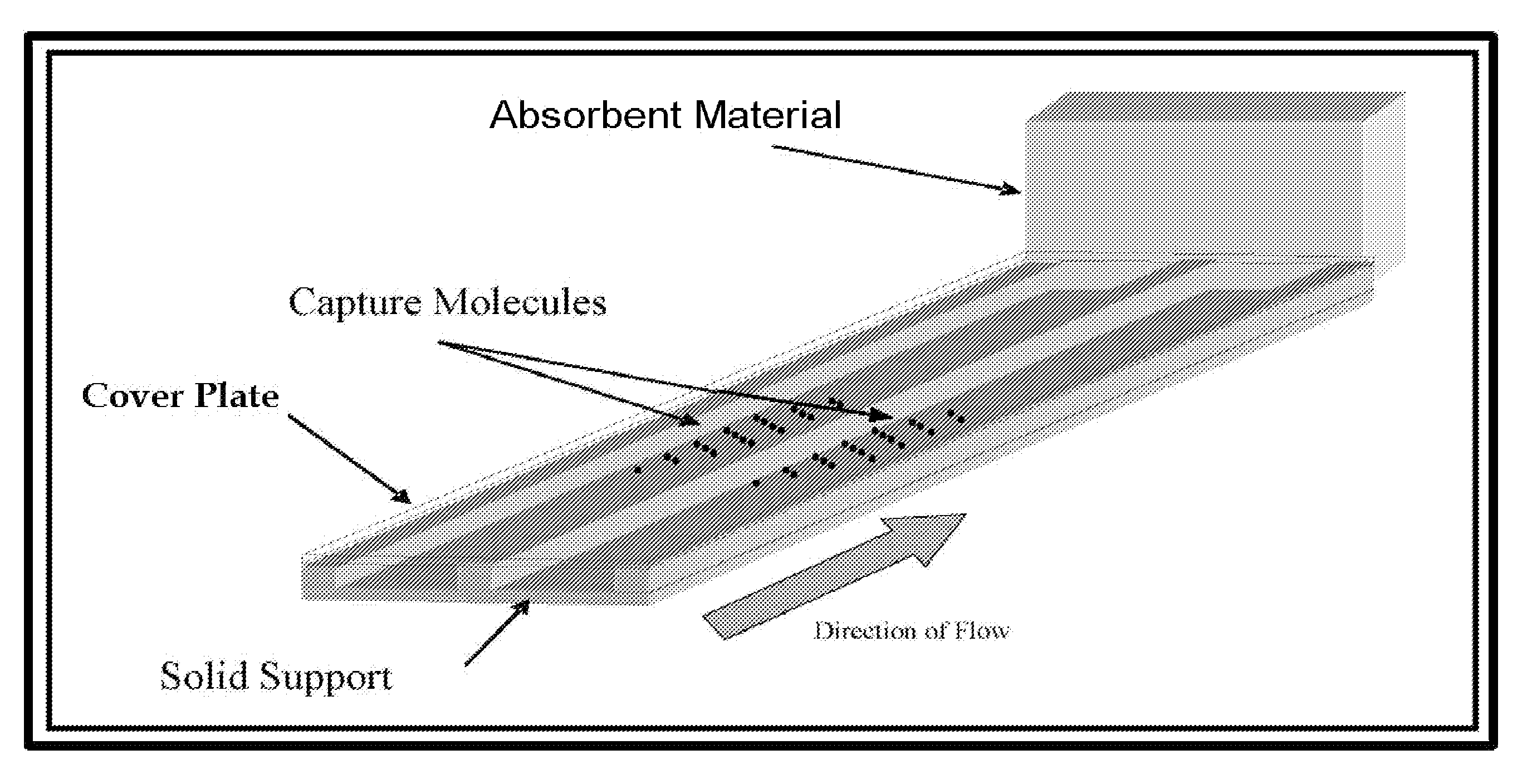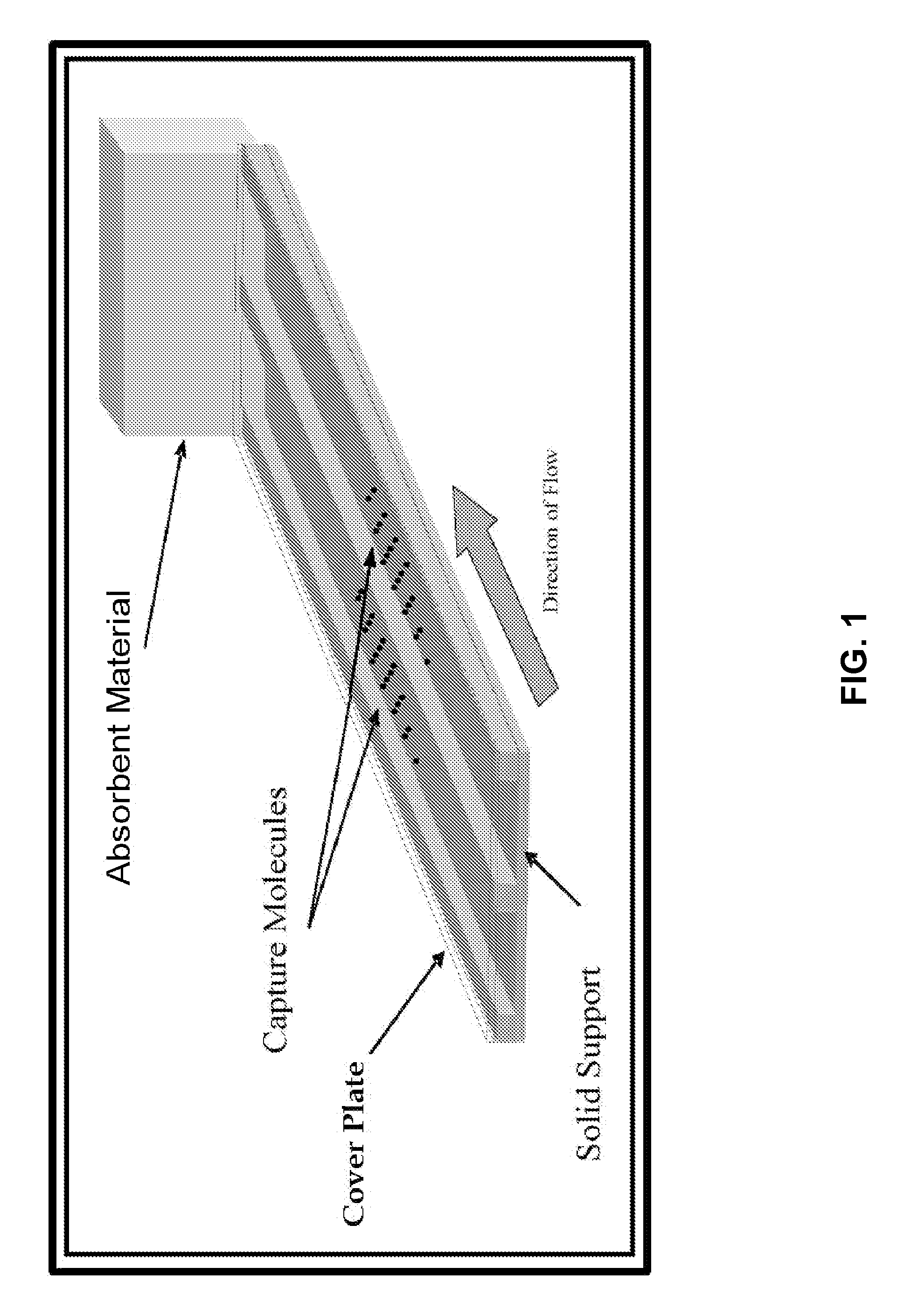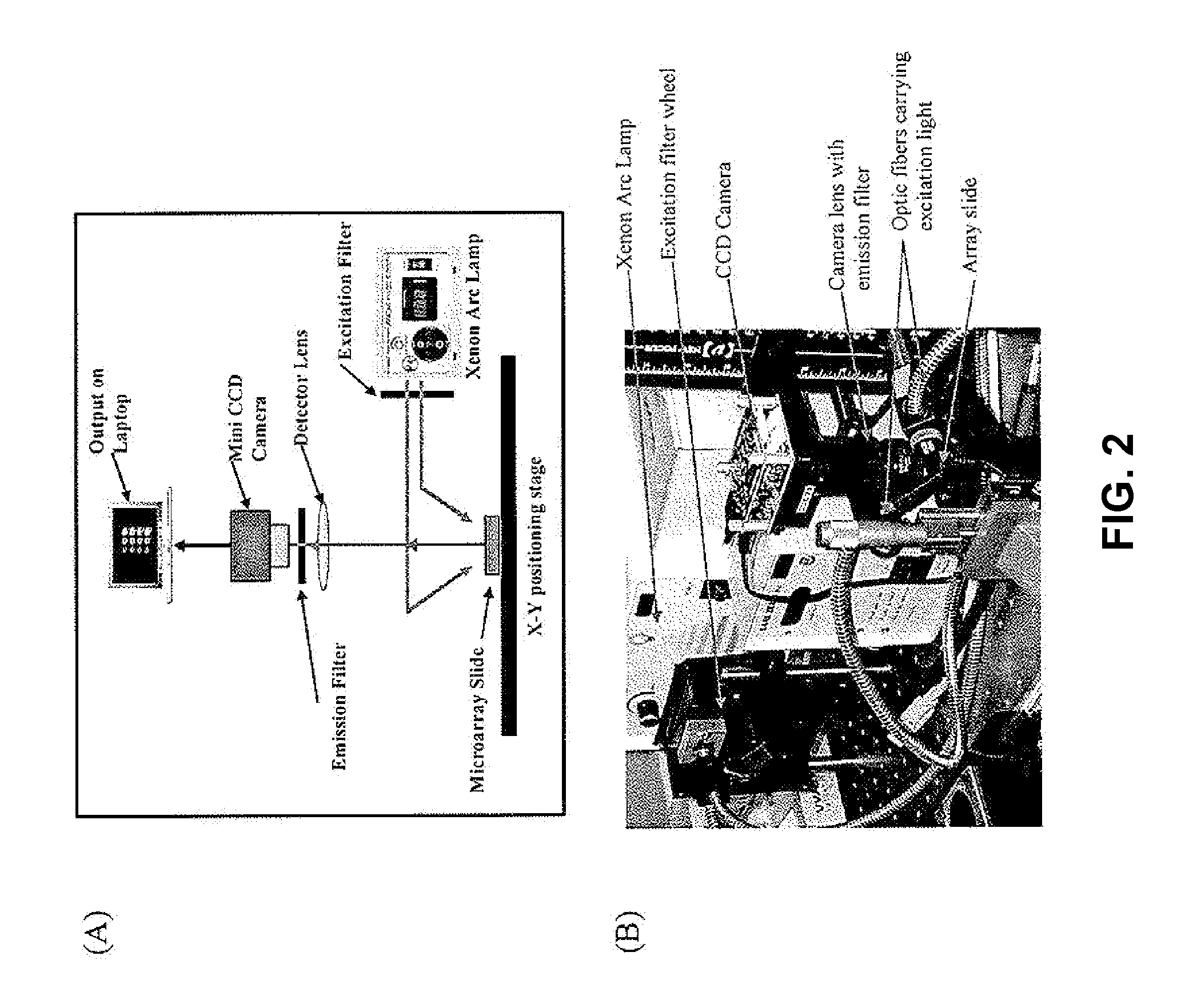Device, Array, And Methods For Disease Detection And Analysis
a disease detection and analysis technology, applied in the field of biological and chemistry, can solve the problems of limiting application at the poc, not being able to detect breast cancer with any single marker, and not being able to identify breast cancer single markers
- Summary
- Abstract
- Description
- Claims
- Application Information
AI Technical Summary
Problems solved by technology
Method used
Image
Examples
example 1
Development of Multiplexed Assays
[0133]A multiplexed immunoassay for the measurement of breast cancer biomarkers using the protein microarray format was developed.
[0134]Protein microarrays have the potential to be used to simultaneously analyze large numbers of serum proteins in a rapid and reproducible manner. In recent years, protein microarrays have evolved as powerful tools to address high-throughput requirements by performing “traditional” biochemistry in an ultra-high-throughput and miniaturized format. On protein microarrays, purified capture molecules are immobilized in unique locations on the surface of the substrate that allow for recognizing the target under study. Since each capture molecule is immobilized in a precise, predetermined spot, the protein microarrays achieve multiplexing capability based on this unique location of the capture molecule and therefore the target protein bound to it (assuming high specificity of the antibody-antigen reaction). In the case of a r...
example 2
Sensitive Multiplexed Diagnostic Test for Breast Disease
[0180]The multiplexed protein microarray assay developed previously is applied to the differential detection of four biomarkers in breast cancer patient sera.
[0181]Materials and Methods
[0182]Microarray assay reagents and protocols are essentially similar to those described above in Example 1. Recombinant proteins, capture and biotinylated detection antibodies for Her-2, MMP-2 and Osteopontin were purchased from R&D systems (Minneapolis, Minn.). Other reagents used in the assay include: VEGF antigen and capture and biotinylated detection antibodies (Biosource International Camarillo, Calif.), CA 15-3 antigen and anti-CA 15-3 capture and detection antibodies (Fitzgerald, Concord, Mass.). The CA 15-3 detection antibody was biotinylated using a kit and according to the manufacturer's (Pierce, Rockford, Ill.) instructions. All other detection antibodies were purchased as biotin conjugates. Lyophilized human serum was purchased from ...
example 3
Development of a Multiplexed Flow-Based Detector
[0207]A flow based platform was built with a unique custom flow channel device onto which, the multiplexed assay was translated from the protein microarrays. Below, the development of the device is described. A new flow-based immunoassay system for the simultaneous and rapid quantification of multiple analytes without several processing steps is described. This example also discusses the details of the device design, which is based on the standard microarray sandwich immunoassay format, except that the static incubation step was replaced with flow of the analyte mixture over the antibody array. Multiple steps have also been eliminated (including washing) by mixing all the assay reagents in predetermined concentrations in one single sample. In addition, a benchtop version of a portable imaging system was developed, comprising a miniature uncooled CCD camera and a Xenon arc lamp. This method demonstrated rapid quantitative measurement an...
PUM
 Login to View More
Login to View More Abstract
Description
Claims
Application Information
 Login to View More
Login to View More - R&D
- Intellectual Property
- Life Sciences
- Materials
- Tech Scout
- Unparalleled Data Quality
- Higher Quality Content
- 60% Fewer Hallucinations
Browse by: Latest US Patents, China's latest patents, Technical Efficacy Thesaurus, Application Domain, Technology Topic, Popular Technical Reports.
© 2025 PatSnap. All rights reserved.Legal|Privacy policy|Modern Slavery Act Transparency Statement|Sitemap|About US| Contact US: help@patsnap.com



